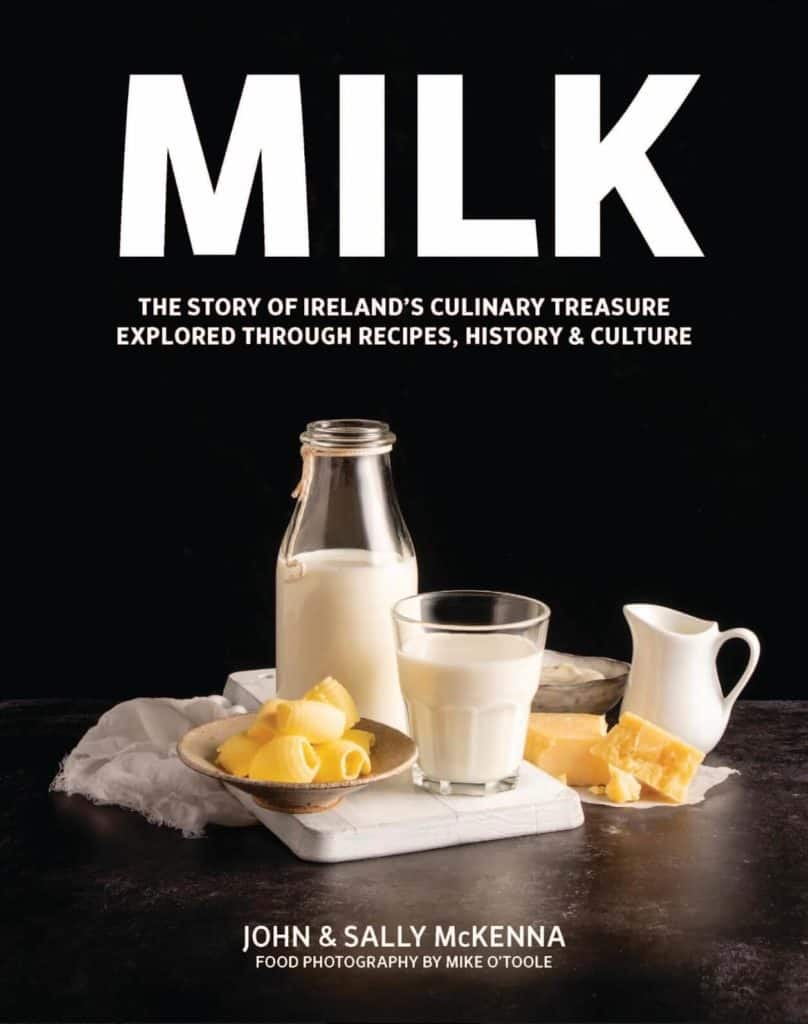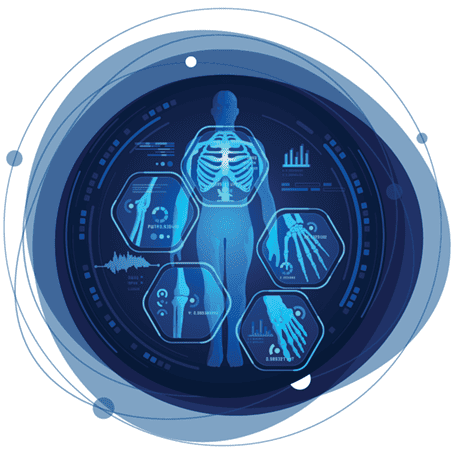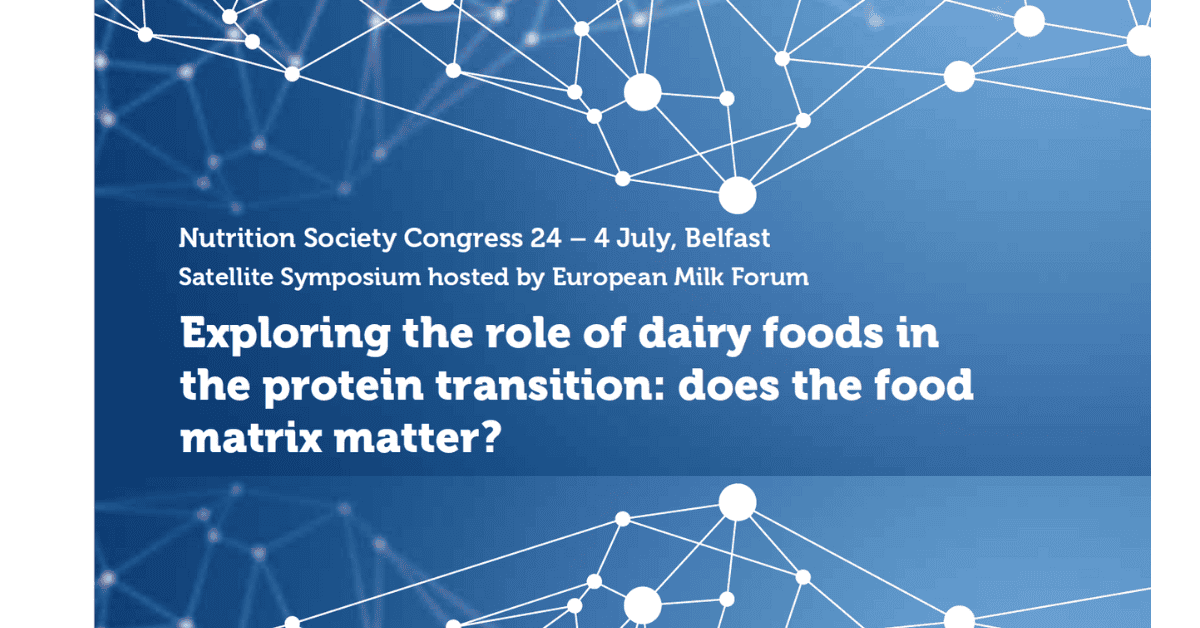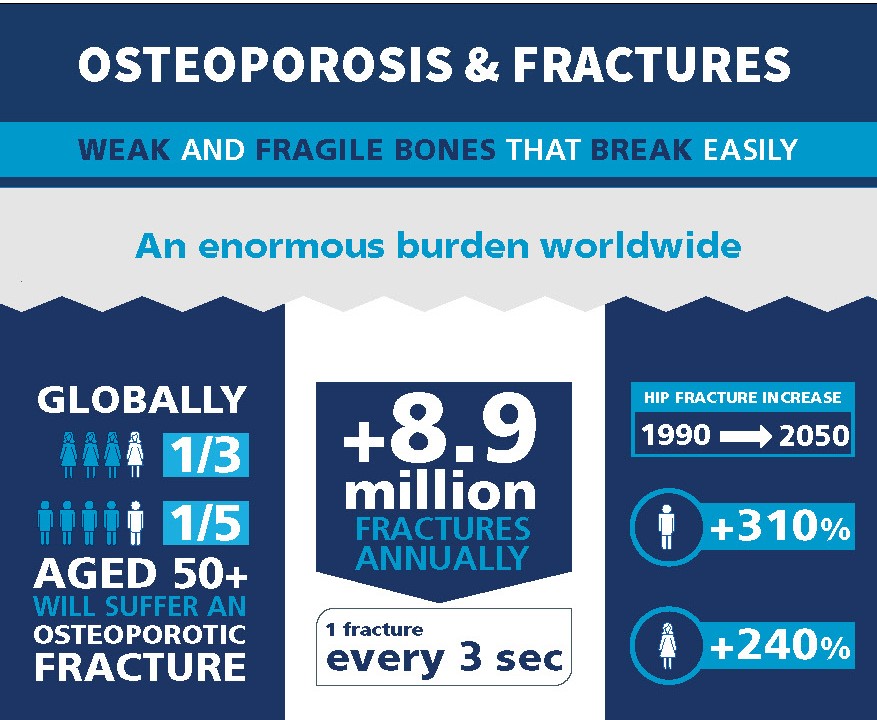Nutrition Society Congress 24
4 July, Belfast
Satellite Symposium hosted by European Milk Forum
- Introduction to the food matrix concept: implications for the protein transition- Presented by Professor Michelle McKinley, Queen’s University Belfast
- Dairy matrix effects: the case of protein transition and micronutrient bioavailability – Presented by Professor Ian Givens, University of Reading
- Beyond protein content to optimise musculoskeletal health: interactions in the dairy matrix – Presented by Dr Oliver Witard, King’s College London
A protein transition entails a shift in the production and consumption of protein sources away from animal proteins, including dairy, to more plant-based and alternative protein sources. The symposium examines the role dairy foods have in such a dietary shift and explores the impact that the food matrix, in particular the dairy food matrix, has on this.
By definition the protein transition focuses on a single macronutrient, protein, yet foods are much more than their protein content. In dairy’s case there are several nutrients that go along with the protein including calcium, iodine, vitamin B12 and riboflavin. Many of these nutrients are already in short supply in European diet for some groups – e.g., calcium, iodine, riboflavin for teenage girls and women of child-bearing age. A shift away from dairy foods is likely to have a further negative impact on this.
Moreover, it is increasingly recognised that the nutritional and health effects of a food go beyond individual nutrients and are the result of a food’s structure and nutrient composition and how these interact with each other – the so-called food matrix effect.
The matrix concept is that food is more than the sum of its parts, and does not necessarily have the health effect predicted from nutrient content alone. Cheese is a good example of the matrix effect. Although cheese contains saturated fat, the majority of studies report that cheese consumption does not increase the risk of cardiovascular disease and may, in fact, be beneficial. Interactions of the components and structure of the cheese matrix including calcium, phosphorus, magnesium and the milk fat globule membrane modulates the effect that the fat it contains has on blood lipids levels.
Examining this further with respect to the role of dairy foods in the protein transition includes food matrix effects on nutrient bioavailability. Bioavailability is an important intermediate between food intake and nutrition and health status. The nutrient content of a food is only one part of the story – if little of the nutrient is absorbed and utilised it will not have the same effect. Consideration of calcium in food matrices is important for enabling optimal utilisation of dietary calcium. For dairy and calcium bioavailability, calcium as part of the casein micelle (a complex structure designed ‘by nature’ for calcium absorption) is beneficial. Similarly, for other micronutrients, milk and dairy products generally contain enhancers of nutrient absorption and bioavailability. Therefore, through both nutrient content and bioavailability, dairy foods have an important role in micronutrient adequacy in the protein transition.
The quantity and quality of protein in foods is important in the protein transition – the dairy food matrix is rich in high-quality protein – especially critical at key life stages notably in the young, during pregnancy and in older people. But even beyond protein quantity and quality, the dairy matrix can have a positive effect to optimise musculoskeletal health. There is emerging research that the impact of protein on muscle differs depending on the food matrix it is in e.g., interactions with other nutrients in the food matrix may augment the effect. In addition, other aspects of the food matrix and dairy food matrix all have an effect including the structure (solid, liquid, gel forms of the product), preparation (cooking, heating etc.), processing (e.g., fermentation). These should be taken into account when assessing the impact of a protein-containing food. Again, the food matrix is an important consideration for dietary guidelines for protein and for food-based dietary guidelines more generally in the protein transition.

























